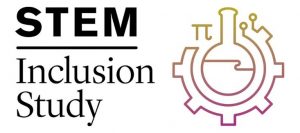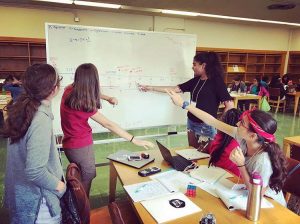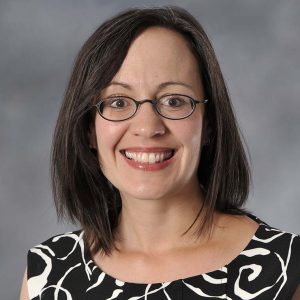Guest Authors:
Daniel L. Reinholz, Robin Wilson, and Amelia Stone-Johnstone
Introduction, by Daniel Reinholz
As mathematicians, we think deeply about what mathematics we want to share with our students. We think about all of the beautiful aspects of the discipline that they might be interested in. As mathematics educators, we also think about how to help our students learn these ideas. We do our best to develop  meaningful activities that can engage our students in the deep work of really doing mathematics. It takes considerable expertise to understand mathematics and to teach it well. At the same time, it can be easy to overlook who gets to participate in the activities we create. When we facilitate a discussion, how do we make sure all students are getting a chance to participate? How do we keep track of the students who do have access to opportunities to learn in our classrooms, and what do we do when we notice some students don’t seem to be getting a fair chance? This blog post focuses on one tool, EQUIP, that can help address these issues (see Reinholz & Shah, 2018; Reinholz, Bradfield, & Apkarian, in press).
meaningful activities that can engage our students in the deep work of really doing mathematics. It takes considerable expertise to understand mathematics and to teach it well. At the same time, it can be easy to overlook who gets to participate in the activities we create. When we facilitate a discussion, how do we make sure all students are getting a chance to participate? How do we keep track of the students who do have access to opportunities to learn in our classrooms, and what do we do when we notice some students don’t seem to be getting a fair chance? This blog post focuses on one tool, EQUIP, that can help address these issues (see Reinholz & Shah, 2018; Reinholz, Bradfield, & Apkarian, in press).

 The year is coming to a close, and for mathematicians that means that the
The year is coming to a close, and for mathematicians that means that the  professional organizations, then in-depth interviews with selected survey participants. By participating in the study, professional organizations not only guaranteed that their members will be represented in the broad results of the survey, but they also received a summary of their member’s answers to a small subset of the survey questions. The summary provides some insights into the beliefs and experiences of our members, specifically concerning their places of work, but does not provide any of the details that researchers expect to glean from follow-up interviews with a smaller sample of the survey participants. (Note that for most of this analysis, only respondents who were employed at the time were included, with graduate students included only when comparing responses across employment sectors.) The goal of this post is to share the results in the summary received by the AMS.
professional organizations, then in-depth interviews with selected survey participants. By participating in the study, professional organizations not only guaranteed that their members will be represented in the broad results of the survey, but they also received a summary of their member’s answers to a small subset of the survey questions. The summary provides some insights into the beliefs and experiences of our members, specifically concerning their places of work, but does not provide any of the details that researchers expect to glean from follow-up interviews with a smaller sample of the survey participants. (Note that for most of this analysis, only respondents who were employed at the time were included, with graduate students included only when comparing responses across employment sectors.) The goal of this post is to share the results in the summary received by the AMS.
 about scholars and an elephant. The elephant represents the concept of variable, and the scholars each describe an important facet of the concept: as unknowns, general numbers, parameters, co-varying quantities, or something else. The point is that student conceptions of variables are reasonable attempts to make sense of the contexts in which we have placed them and judging them for not having integrated those contexts into a unifying concept feeds into some of the structural issues with our educational system.
about scholars and an elephant. The elephant represents the concept of variable, and the scholars each describe an important facet of the concept: as unknowns, general numbers, parameters, co-varying quantities, or something else. The point is that student conceptions of variables are reasonable attempts to make sense of the contexts in which we have placed them and judging them for not having integrated those contexts into a unifying concept feeds into some of the structural issues with our educational system. Guest Post by
Guest Post by 
